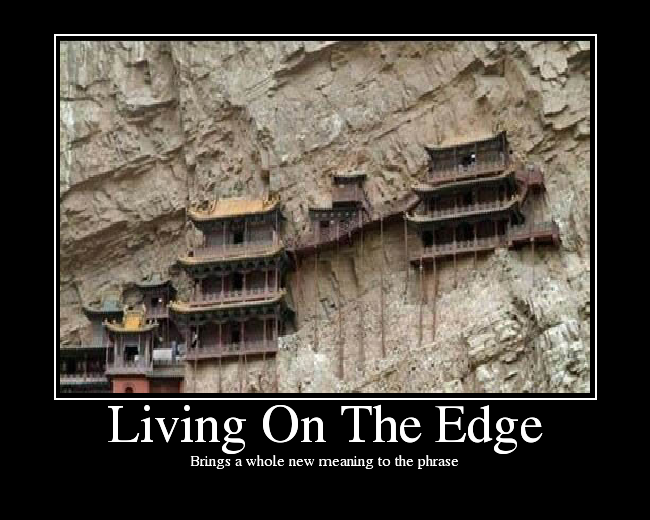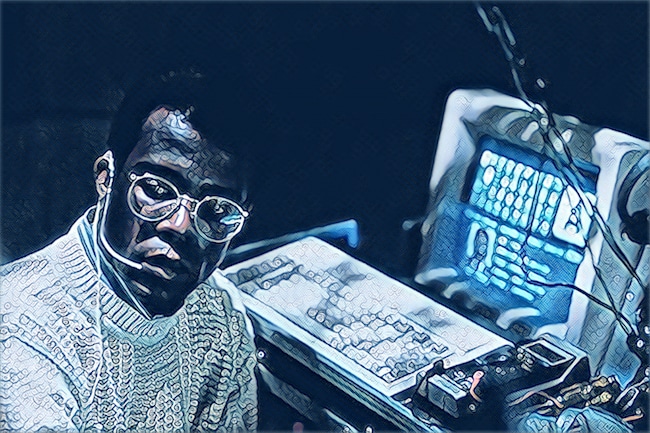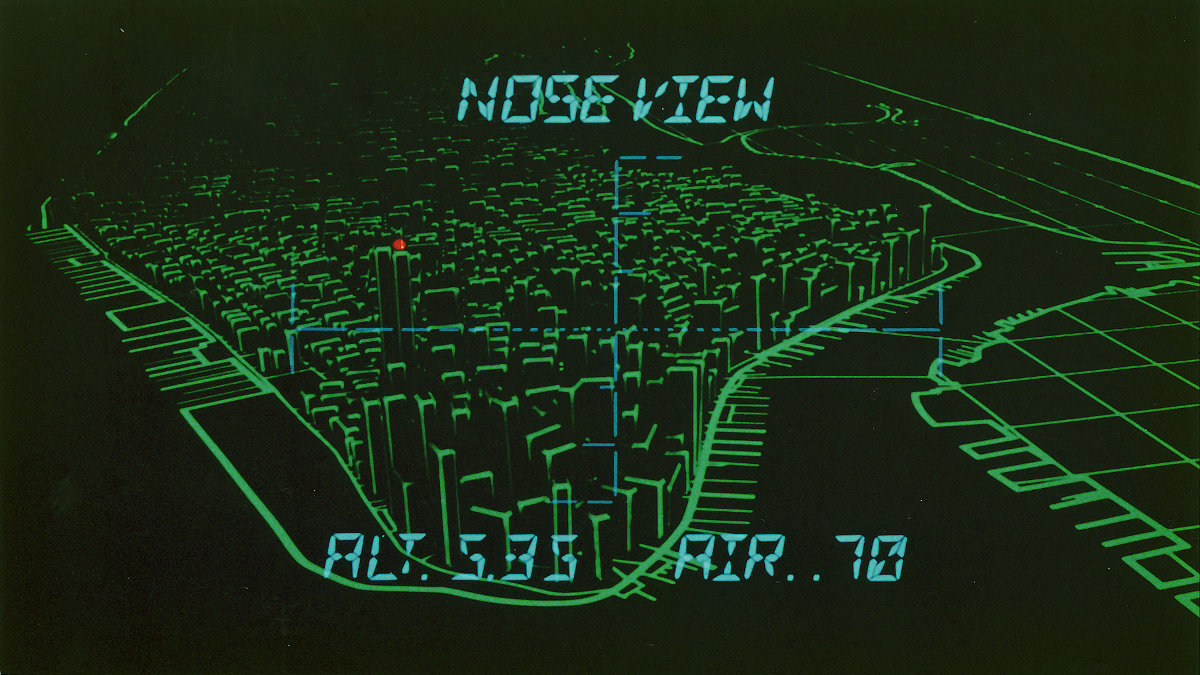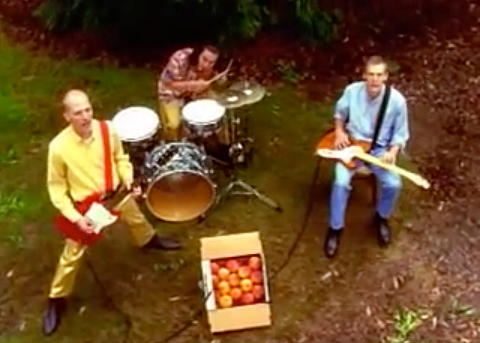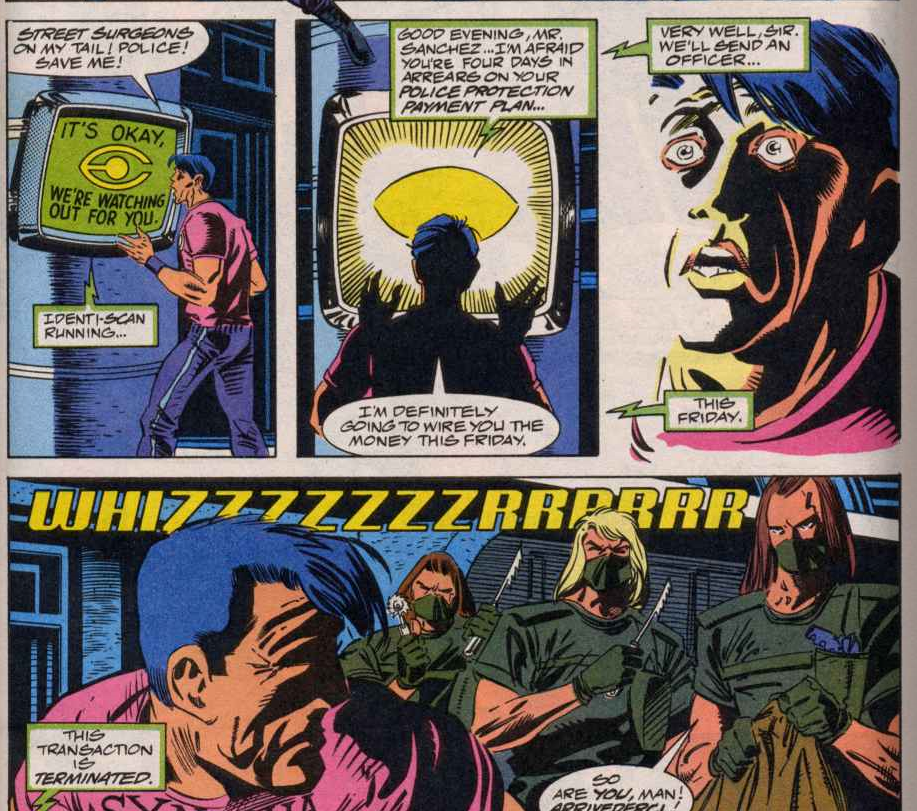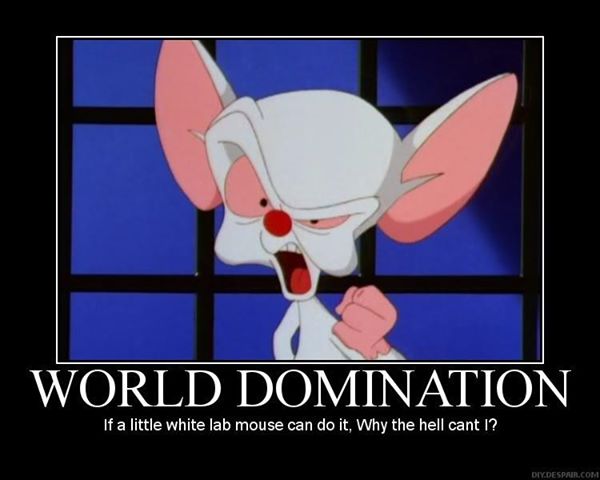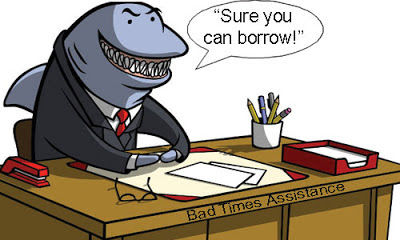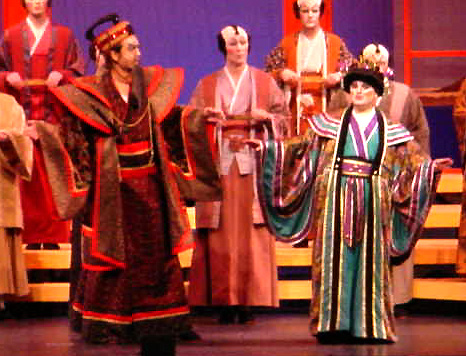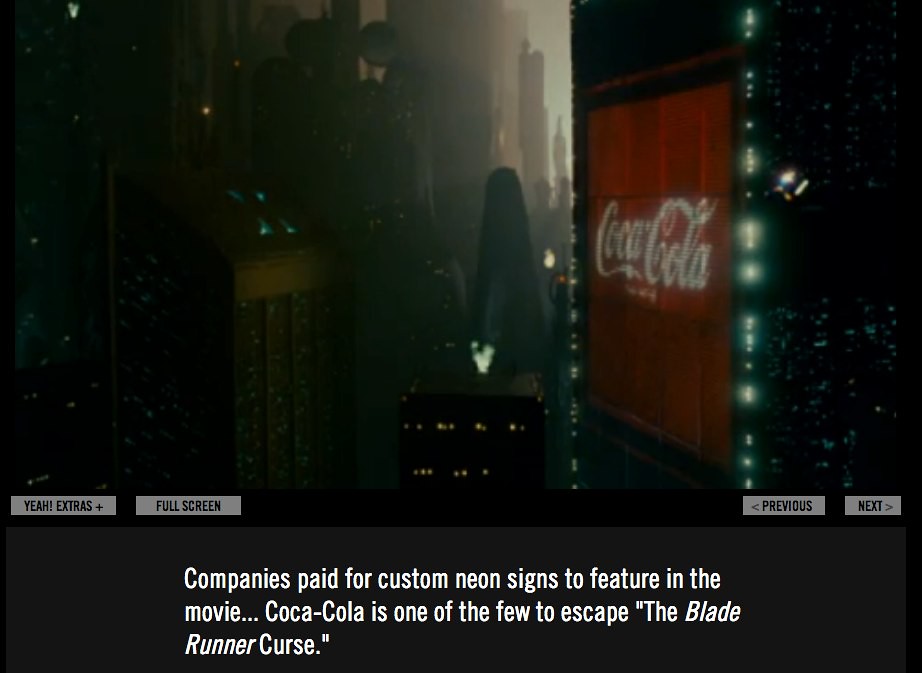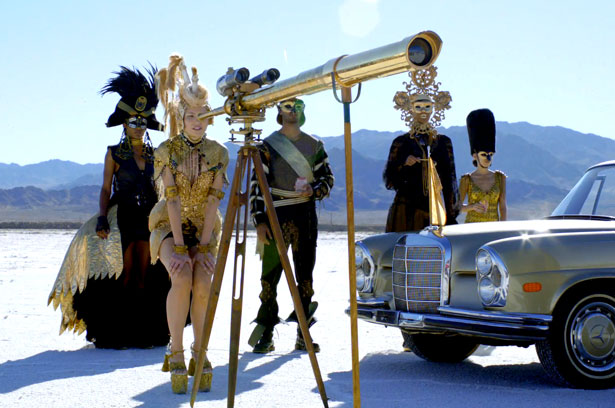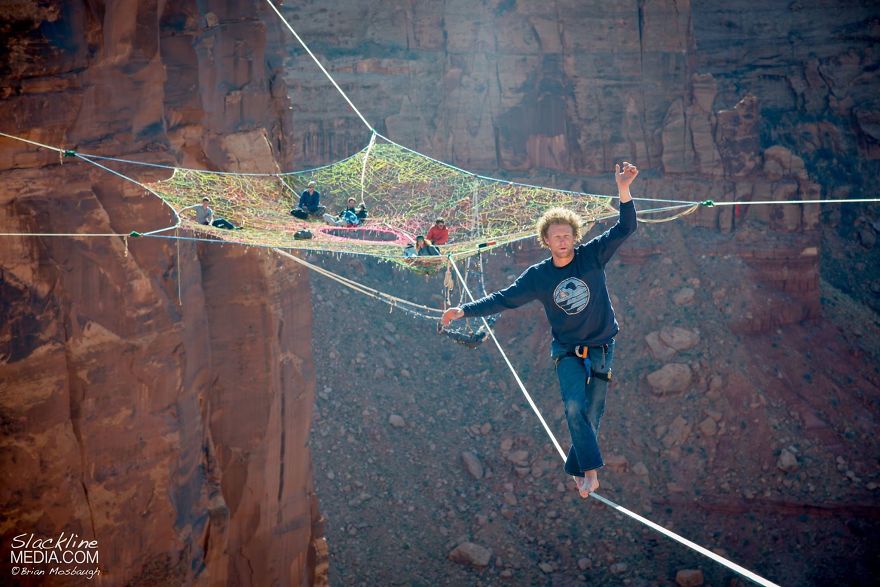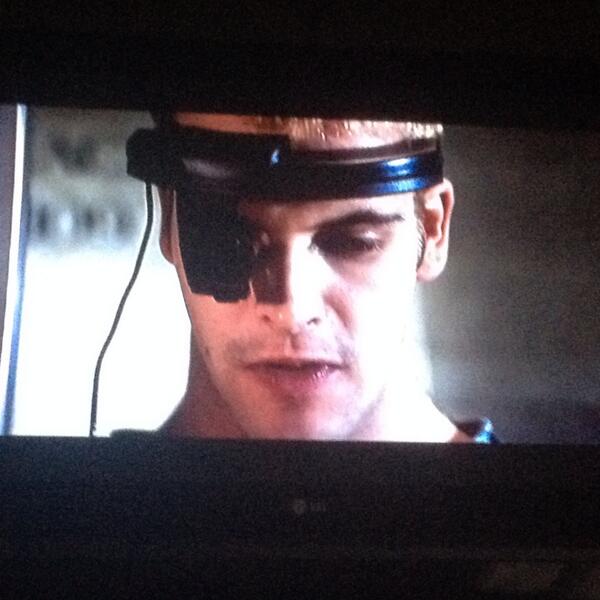CYBERWORLD

So, we did GURPS Cyberpunk and we did GURPS CthulhuPunk, but we kind of skipped a step. In between those books, they released GURPS Cyberworld, which was a setting book for GURPS that expanded on the material in GURPS Cyberpunk, and was at least the nominal basis for the setting in GURPS CthulhuPunk. It was also effectively the third-most prominent Cyberpunk setting in RPGs after Shadowrun and Cyberpunk 20XX.
...and, quite honestly, it takes some of the best talents from Shadowrun to make that happen.
This book is written by Paul Hume (of Shadowrun fame) with additional material by Chris McCubbin (who we went into more detail of in the review of CthulhuPunk). I actually find the fact that McCubbin contributed to this book to be deeply weird, since one of our recurring complaints in the CthulhuPunk review was how little Chris McCubbin referenced Cyberpunk in general or CYBERWORLD in particular in that book. It's possible that there's some untold story of petty author squabbles or something, I genuinely don't know.
Paul Hume was at the end of his career, his first RPG credits (Spacequest) are in the 1970s, this book came out in 1993, and I think Paul Hume stopped writing RPG materials in 1995. I've never met him or even spoken to him online. His Shadowrun work ended before FASA broke up and I didn't start writing Shadowrun until near the end of the FanPro days. While certainly best known for having written Cyberpunk with Magic in the late 80s and early 90s, he did a lot of reasonably straightforward science fiction, and CYBERWORLD is an example of that.
In any case, this is a GURPS book with everything that entails. It's 126 pages, and takes place fifty years in the future in 2043 under the totalitarian regime of the Provisional Government. So it's different from Shadowrun in that the future is 11 years closer, there's no magic (barring CthulhuPunk crossovers), and we're dealing with superstate dystopia instead of Balkanized state dystopia.
It's important to emphasize that GURPS didn't do a lot of straight settings. Most of their stuff was much more generic, the ingredients for a setting or campaign instead of a ready-made meal. Settings looked like GURPS Fantasy with the magical world of Yrth and GURPS Time Traveller which was a platform for a Sliders-style planet-of-the-week campaign.
What you notice about these settings is that the GURPS adherence to Tech Level (TL) tends to fall apart on close inspection. This is because real life, unlike games, doesn't have set tech levels. An axe made in 4000 BCE or 2000 CE is still going to do the job of cutting shit; one might be sturdier or more ergonomically designed or hold an edge better, but it's still an axe and does an axe job. It only becomes cyberpunk when it's a laser axe or is a vibroaxe or something.
What this boils down to, in the opening paragraphs of the introduction, is that GURPS Cyberworld is not the full-blown TL 8 dystopia of GURPS Cyberpunk, but rather a late TL 7/early TL 8 dystopia. So cyberware exists, but not everybody has it; guns still commonly bullets. Idiots use 12345 as their password.
Which is fine. You don't need much high tech to keep the low life aesthetic. And this is a setting all about the aesthetic.
Cyberpunk as a genre is more about feel than it is about setting. Bladerunner never tells you what a C-Beam is. Snowcrash never tells you what corporations have chartered areas of Nevada. Neuromancer never tells you how much information can be stored on a data chip. This is bad news for a cooperative storytelling game in general because it is the concrete realities of a setting that anchor our disparate declarations into a combined narrative. But it's also the dead fucking opposite of the GURPS philosophy. We ran into this in our review of GURPS: Cyberpunk, that a lot of the things you'd need to define in order to do cooperative storytelling games really aren't defined in a lot of classic Cyberpunk properties.
If you want to set role playing games in a Cyberpunk world, you therefore probably have to make our own world, you can't just dig up Zodiac or Max Headroom and say “Kinda like that.” Which was super frustrating when trying to parse GURPS: Cyberpunk, because the book kept trying to make itself Cyberpunk generic, which isn't actually a thing. So perhaps it was inevitable that Steve Jackson would eventually break down and commission a specific Cyberpunk world you could actually play in. And that's this book.
The One-and-Twenty, a Cyberpunk setting that is specific enough you could play in it, but distinct enough from other Cyberpunk works as to not have to pay royalties. A CYBERWORLD, if you will.
I should also point out that GURPS had a very different vision of the technological future than, say, Shadowrun did. Shadowrun had laser weapons, but they started out obscenely expensive and impractical in the Street Samurai Catalog and which got progressively more available as the editions advanced, but it was never to the point that a proper laser gun cost less than a car. GURPS, trying to capture the aesthetic of Star Wars and Star Trek and Battlestar Galactica and Buck Rogers, had more of a tendency for laser weapons, and also handheld gauss rifles and suchlike. We already pointed out the bizarre battery situation that GURPS tech tended to have too.
Which is a long way to say: there are some quirks, and the tech level is bizarrely higher and lower than in other comparable cyberpunk settings.
There are 13 playtesters and literally all of them are dudes. Women work on this project, but in editing and artistic roles. All the writing and playtesting of this book was done by men.
Introduction
Being GURPS, GURPS Cyberworld is actually very good about referring to other GURPS books. In this case, since they're leaning so heavily on GURPS Basic Set, GURPS High Tech, GURPS Ultra-Tech, and GURPS Cyberpunk, they actually use letter-codes in the citations so you know which book to pluck off the shelf when you want some piece of TL7/8 gear or which netrunning rules to reference or whatever. It's...nice? I mean, that's a level of consideration and integrity you don't normally see in RPGs.
This book starts with an italicized story that is in heavy future speak lingo. This lingo is fairly hard to parse. Some of it is that the story is pretty short, so there isn't a lot of context for you to figure out what the made up words mean.
Yeeeeah. I don't know either.This paryen with the steel eye was holdin' forth onhow the proles get drigged by ProGov, when the nerks joined the party.
The Introduction is just one page long, The book wants us to call the 21st Century the “One-and-Twenty” and fucking no one ever does that because what the actual fuck? The points here are so fast and furious it might as well be a bullet pointed list. There's no real prose other than the future-slang inserts. This might literally be just the design specifications. It bluntly tells you how this book is different from the assumptions of GURPS: Cyberpunk (mostly that here is less Techlevel 8 shit lying around), and there's some rapidfire stream-of-consciousness facts established about this cyberworld that make it different from other cyberworlds.
So like Japan stays relevant because they went into union with the successor states of the Soviet Union for some reason. But imagine if that fact was relayed sandwiched between two other equally difficult to swallow factoids trying to explain the setting of their future dystopia game in twenty seconds.
As top-level introductions to the world go, the idea that Australia is a depopulated wasteland is...less unbelievable than it was a little while ago.
An issue that GURPS has that we touched on lightly in GURPS: Cyberpunk is that the game has the past, present, and future all mapped out into technology levels and none of them correspond to any form of Cyberpunk (except maybe Battle Angel Alita). The tech levels jump straight from Star Trek 4: Whales in Space to Star Trek 4: Whales in Space.

The idea of a grungy future that had recognizably science fiction devices like flat screen video phones but also was still grounded in decidedly 20th century fare like guns and cars (rather than lasers and rocketships) was simply not part of the GURPS concept of the universe in 1993. They've since revamped the techlevels such that there's more gradations around computers, but there's still a pretty gaping hole around the Cyberpunk milieu. And it was definitely worse back when CYBERWORLD was written.
Since this is GURPS, I should probably mention how this interacts with Magic, should you decide to homebrew a GURPS Shadowrun clone. There are technology-based spells in the most common form of GURPS Magic, and those spells are generally TL-dependent. Which means that if you decide the world is is TL 7 and all your spells are TL 7, then you may well have to learn entirely new spells to deal with TL 8 gear. This isn't an entirely ridiculous premise, depending on how you set up your campaign, but it's something to be aware of. Other than that, there's absolutely no problem with adding magic to your GURPS Cyberworld campaign, and in fact Steve Kenson did just that with his Zauberpunk article for the GURPS online magazine.
One thing that's really missing from this introduction is a “What is Roleplaying?” section. That and a description of what the actual fuck the player characters are supposed to do in this world. That's two things. Also a description of what side you're supposed to be on would be nice. OK, amongst the things that are missing from this introduction are: any of the things you might want to build a character or a group of characters around. And a fanatical devotion to the pope.
I think you're supposed to just “know” that this is basically Shadowrun without the magic and that your PCs are basically Shadowrunners. But it doesn't actually say that in the introduction. Like, at all.
Yeah, the general assumption with this book is that if you picked it up, it's because you basically know what it is just from the name on the cover. Which, to be fair, isn't probably that far from the case. Nobody wrote this book expecting it to be your first or even second roleplaying game book.
Next up: A World on the Edge.
